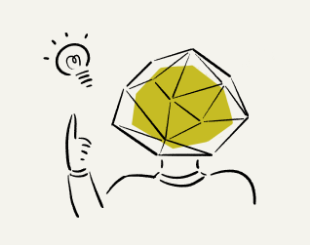
Group 03.
Data Science and MachineLearning
Understand the mobility society as a dynamic collection of networks, and analyze it by utilizing machine learning techniques.
The dynamics of a space in which people and objects move around are analyzed using machine learning technology.
The mobility society, in which cars, public transportation, and people are constantly on the move, can be understood as a collection of multiple dynamic networks. By integrating these networks on the basis of a single region and mathematically analyzing how the optimal network could be, it is possible to create an optimal transportation arrangement that combines trains, buses, and walking. The goal of our group is to develop machine learning techniques to analyze these dynamic networks.
Research Outline
One of the network data analysis methods that our group is working on is called extended hypergraphs. A graph here refers to a diagram or matrix representing the connections between multiple points. A graph consists of points (nodes) and lines (edges) connecting them, but this concept can be extended to represent complex transportation networks by treating multiple edges connecting three or more nodes as a single set, or hyperedge. For example, a network connecting multiple airports served by an airline alliance can be represented as a single hyperedge.
While hyperedges are useful for describing the overall picture of a network with many elements, they have the disadvantage of not being able to handle the relationships among the nodes contained in a single hyperedge. Therefore, our group proposes an “extended hypergraph,” which represents the relationship between nodes in a hyperedge as a further graph and treats it as data (tensor) with a hierarchical structure. By developing algorithms for analyzing extended hypergraphs, we hope to provide solutions to the problems faced by the networks of the mobility society, from air networks to road networks and water networks, from the perspective of mathematics.
Participating Members
| Kazushi Ikeda | Information Science, Graduate School of Science and Technology, Nara Institute of Science and Technology |
| Takatomi Kubo | Information Science, Graduate School of Science and Technology, Nara Institute of Science and Technology |
| Kazunori Iwata | Faculty of Information Sciences Hiroshima City University |
| Tan Renzo Roel Perez | Information Science, Graduate School of Science and Technology, Nara Institute of Science and Technology |
| Kentarou Hitomi | Information Science, Graduate School of Science and Technology, Nara Institute of Science and Technology |
| Brian Godwin Sy Lim | Information Science, Graduate School of Science and Technology, Nara Institute of Science and Technology |
| Hideki Hayashi | Information Science, Graduate School of Science and Technology, Nara Institute of Science and Technology |
| Hans Jarett Jim Ong | Information Science, Graduate School of Science and Technology, Nara Institute of Science and Technology |
| Benedict Tiu | Information Science, Graduate School of Science and Technology, Nara Institute of Science and Technology |
| Zihao Yu | Information Science, Graduate School of Science and Technology, Nara Institute of Science and Technology |

